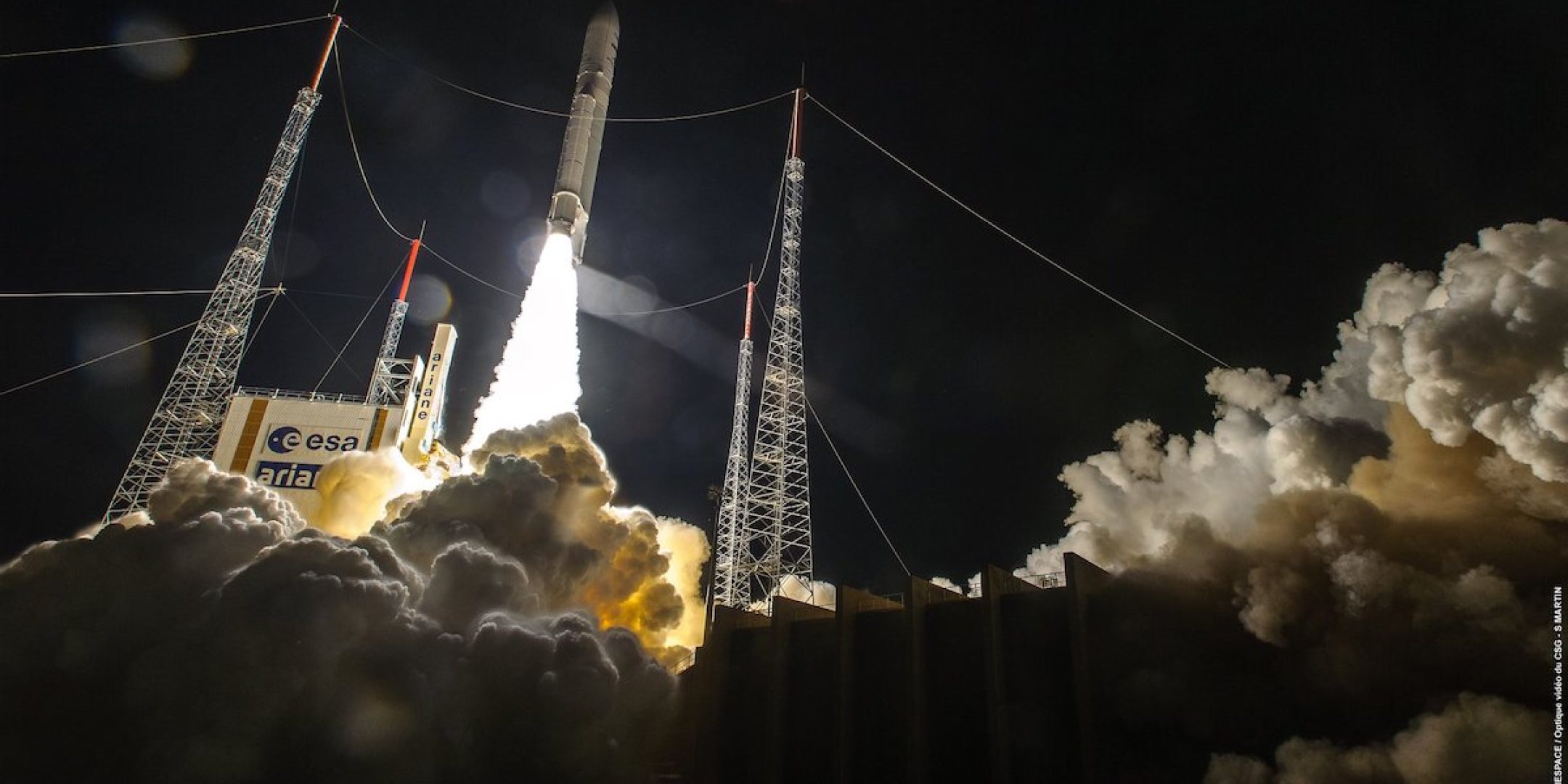Saturday 15 August, Ariane 5 completed a flawless launch from the Guiana Space Centre (CSG), Europe’s spaceport in Kourou, orbiting two satellites and a life extension vehicle: Galaxy 30 for Intelsat, MEV-2 for SpaceLogistics LLC and BSAT-4b for B-SAT. The launch marked Ariane 5’s 109th flight, its third mission in 2020 and the third this year from the CSG. It was also the 253rd flight in the Ariane series.
With a launch mass of 3,298 kilograms, Galaxy 30 (G-30) is the first replacement satellite in Intelsat’s North American Galaxy fleet refresh. It will provide high-performance broadcast distribution capabilities, including ultra-high definition (UHD) and over-the-top (OTT), while also supporting broadband, mobility and enterprise network solutions. Built by Northrop Grumman for Intelsat, its expected lifetime is 15 years.
With a launch mass of 2,875 kilograms, MEV-2 is a satellite life extension vehicle that will dock first to Intelsat 10-02 (IS-10-02). Once docked, it will control the satellite’s orbit using its own thrusters. After this first mission, MEV-2 will undock and be available for another customer. Built by Northrop Grumman for SpaceLogistics LLC, its expected lifetime is 15 years.
With a launch mass of 3,530 kilograms, BSAT-4b will provide direct-to-home (DTH) television to ensure exceptional ultra-high definition (UHD) video distribution over the Japanese archipelago, like its twin BSAT-4a. Built by Maxar Technologies for B-SAT, its expected lifetime is 15 years.
This latest Ariane 5 launch was the first opportunity to use the KASSAV autonomous range safety system developed by https://fscience-old.originis.fr/wp-content/uploads/2023/06/GLOC_Oslo_Norway_S2_27juillet2022_web-2-1.jpg in partnership with ArianeGroup. The first version of the system, KASSAV1, provides an autonomous tracking capability independent of the launcher. The launcher’s position and velocity are downlinked in real time over a dedicated telemetry link to range safety systems. For this first campaign, under https://fscience-old.originis.fr/wp-content/uploads/2023/06/GLOC_Oslo_Norway_S2_27juillet2022_web-2-1.jpg’s responsibility, Safran—the company in charge of developing the system—supported ArianeGroup during checks performed at the BIL launcher integration building. ESA adapted the launcher to accommodate the KASSAV1 system, which will now fly on all Ariane 5 and Ariane 6 launchers operating from the CSG.
After the launch, https://fscience-old.originis.fr/wp-content/uploads/2023/06/GLOC_Oslo_Norway_S2_27juillet2022_web-2-1.jpg President Jean-Yves Le Gall said: “Another success for Ariane 5! I congratulate and thank all the teams to whom we owe this success for their professionalism and expertise, at ESA, Arianespace and across the European space industry, at Intelsat, SpaceLogistics LLC and B-SAT, and of course at https://fscience-old.originis.fr/wp-content/uploads/2023/06/GLOC_Oslo_Norway_S2_27juillet2022_web-2-1.jpg’s Launch Vehicles Directorate and the Guiana Space Centre.”








